Who am I?: Heritage and rebranding
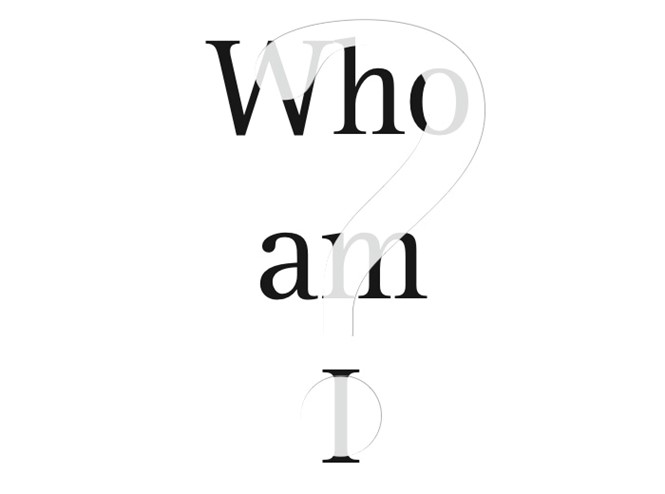
Heritage is more than just history, it speaks to the brand's purpose, to its past and to its promise to stakeholders. Getting it right facilitates innovation, but does getting it wrong lead to disaster?
"When you create a value system and you create something around that value system that isn’t just a product, you create heritage; and everything you do has to be judged against that value system,” says Adam Padilla, president and chief creative officer at New York-based brand consultancy BrandFire. His words dispel the nebulous definitions of ‘heritage’ that clutter the minds of brand experts and consumers alike. It is a characteristic bestowed upon brands that are both old and successful, often in the luxury space. However, heritage cuts deeper and should say something about the purpose of the brand, rather than its popularity, success or longevity.
The biggest discrepancy in the definition of heritage is location. Those in the UK and Europe equate longevity and luxury with heritage, in the US, heritage can be about brand affinity, in Asia, it is likened to exclusivity, in the Middle East to a strong local identity and in Australia to quality.
Yet, virtually all brand and communications professionals surveyed say heritage links back to the purpose of the brand, why it exists and what it achieves for its audience – rather than what exactly it sells. However, when rebranding or redeveloping an existing brand – as almost all companies will – heritage is not always considered. Kate Thomas, head of marketing & brand at Australian premium white goods retailer Winning Appliances, says, “A rebrand allows any business to take a step back and evaluate its past, present and future place in the market and wider world. Ultimately, it’s a moment to identify its raison d’être.”
That moment, for Winning Appliances allowed it to embrace its history and its modernity at once. Other follow suit when rebranding and embrace an aspect of their heritage that has brand equity. Yet some fail to do so and replace beloved aspects of their brands in favour of trendy visual tropes. Others, often younger companies, look to their brand purpose and recent origins to provide them with a visual or strategic direction based in heritage.
In the first instance, brands can fall prey to the allure of a rebrand or to the desire of a new CMO, CEO or other decision-maker change an element of their brand which has equity to stakeholders. International retailer Gap is a prime example. The beloved blue square, with serif word mark has been with Gap since 1986. It is applied across countless physical assets and storefronts worldwide. Yet, in 2010, a semi-crowdsourced reinterpretation of the blue square was launched without a supporting communications campaign. What Gap didn’t bargain for was the amount of love consumers had for that square and the impact a rebrand would have on the bottom line estimated at about £100m in losses.
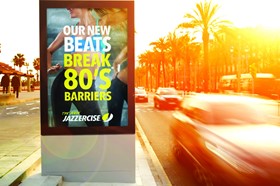

“In FMCG and other sectors, it’s very tempting for new marketing directors to want to leave their mark by pushing [a rebrand] forward and the danger is you could start losing recognition of these elements and start to get confused,” says global brand consultancy Siegel+Gale’s associate creative director Dan Vasconcelos in regards to the Gap rebrand. “If I’m a customer and I feel that I own a piece of Gap and if there is a very sharp change without an evolutionary process, I feel like I’ve been robbed of that history or that connection with that brand and that’s where the backlash comes from.”
He compares the rebrand to the recent change Airbnb undertook. The digital business launched a rebrand that said, firmly, what the company stood for and who its audiences were. Itd had no history to draw upon, but it had a strong sense of purpose, which eventually helped its stakeholders accept the now iconic rebrand.
This is not a unique occurrence. The University of California’s disastrous rebrand has achieved Gap-like status in the annals of mismanaged rebrands.
The famed university system – home of UC Berkeley or Cal and UCLA, among others – announced a modern, sunny rebrand that would take the place of its disjointed, corporate identity based around its original seal. It underestimated, however, the value of a professional- feeling brand and students and alumni spoke of feeling that their education had been devalued by the light-hearted brand. The university, after much public debate, reneged on their proposition to rebrand, keeping the muddled original. In this case, the university had a clear vision for the future, which the new brand supported, yet it didn’t communicate that effectively to relevant stakeholders.
Global brand agency JKR’s strategy director in Singapore, Katie Ewer, says evolution, not revolution, is key when dealing with heritage in rebranding, “Establish if you own anything visually distinctive that people recognise as unique to you. Unless that something has massively negatively connotations, then amplify it and celebrate it. Brands don’t throw away established symbols or iconography as they modernise – they simply evolve them or treat them with a fresh perspective.” Others agree that change and heritage are not mutually exclusive. Changes to elements of the brand with inherent equity should be used to drive innovation and prepare the company for the future.
That’s exactly what New York confectionery company Little Bird did. The name – derived from a Yiddish pet name used by one of the founder’s grandmothers – had heritage in that it was tied emotionally to the business and its founding proposition of making confections with care. Padilla, who worked with the Meyers on the rebrand, says, “If the brand is known for something good, you just want to upgrade it not completely demolish it.” Despite initial reservations about the ability of the words ‘little bird’ to communicate effectively about chocolate, the BrandFire team recognised it’s value. “If the public see it as neutral, but the owners feel a lot of heart for the name it’s a better idea not to change it,” Padilla adds.
What did change, though, was the positioning of the business. What was once one of many artisan chocolatiers struggling for purchase in a crowded market, Little Bird is now primarily a purveyor of spicy, pepper-infused chocolates and snacks – always one of its best-selling, yet understated products. With that positioning, the company is able to expand its business beyond the typical artisan chocolate audience and into those seeking spicy snacks. In conjunction with this shift, the wordmark was reworked to embolden the typeface and change the original red bird logo.
Padilla put a chili pepper to work as a visual pun in which the red bird is both just that and a chili pepper tilted jauntily to the side. “It’s right on with the Little Bird name and the original brand equity, but it evolves the brand because it takes on a whole new dimension – that’s a home run,” says Padilla.
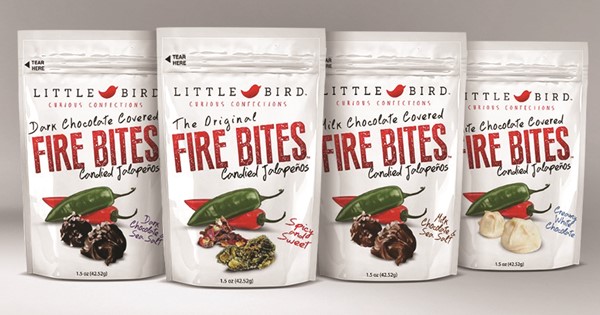
In Saudi Arabia, a longstanding auto dealership, Abdul Latif Jameel (ALJ), took its positioning as a beloved local brand and transformed it for a global future, with the help of Siegel+Gale. The visual brand was revamped entirely with a new typeface, colour palette and image library to strongly tie the story of ALJ to the development of the Middle East’s modern economy. The brand is a celebration of the modern Middle East, says Vasconcelos, “They work together to give you that sense of being propelled into the future but at the same time it is tied to its past.” That linkage is important as the company become s known as a Middle Eastern company with interests beyond automotive.
Though the company is longstanding by Middle Eastern business standards, having been founded in the 1940s, Siegel+Gale drew out its heritage as a core proposition. Heritage is not just about time, but about the business’ purpose. Anant Sharma, CEO of Matter of Form, a digital agency that works primarily on brand experience for luxury brands, says, “Heritage is not to be confused with history. Heritage changes over time and makes history relevant to contemporary culture. Understanding what values make a brand relevant to a current generation of consumers needs to sit at the epicentre of how strategists approach a repositioning, and on this basis, brand elements that are changed should always stay connected to their original purpose.”
For a pair of American brands that recently underwent similarly massive rebrands – Big Heart Pet Brands (formerly of the Del Monte empire) and Jazzercise – heritage was found in the companies’ histories, but also in their values and objectives for the future of their business. American brand agency CBX worked on both rebrands.
Big Heart Pet Brands is, essentially, a new brand. It’s logo and brand system are new. It’s positioning is new. Yet, it is also the only remaining vestige of FMCG giant Del Monte’s business after a sell-off of its human food brands. The company found that its remaining pet-focused holdings were not best served by the Del Monte brand, despite the brand affinity among consumers for the parent company and its own 129-year history.
Satoru Wakeshima, general manager at CBX, says this was a compelling position as the company was now all about pets. That was a proposition that made sense to its consumers, internal audience and investors alike. “While Del Monte Foods owned strong, well-known leadership brands in this space, such as Milk-Bone – and they very well could have gone the route of calling it the Milk-Bone Pet Company – there was a much bigger opportunity. When you’re creating a brand, you’re telling a story. And our story was more than just about the products this company sells, it was about a mission, a purpose: nurturing the bond between pets and the people who love them, making every day special.”
Wakeshima adds, “Big Heart Pet Brands would be a completely different company than Del Monte Foods and that transformation happened literally, overnight.” Despite throwing off the Del Monte mantle, though, Big Heart Pet Brands focused on its objective – love for one’s pets and the emotions within that relationship. From that standpoint, the brand was able to establish a new heritage in pet care by harnessing the company’s culture, the equity in its renowned brands and a new photographic and visual style. Wakeshima says, “Unless heritage has relevancy, it’s merely that: your past. Brand equity is what you own in the minds of people and there’s tangible, visual equity and there’s the intangible, emotional equity that’s associated with a brand.”
Jazzercise also saw heritage as both a boon and a burden. The high-intensity exercise brand had become inextricably tied to the 1980s, and all the visual clichés inherent in that decade. In rebranding, it had to acknowledge the household brand’s heritage, but also address its relevance to the modern woman.
“A rebrand allows any business to take a step back and evaluate its past, present and future place in the market and wider world. Ultimately, it’s a moment to identify its raison d’être”
Creative director at CBX, Alison Koller, says Jazzercise chose a frank, straightforward tone of voice that recognised and dispelled the associations the brand had with the past. But it also remained true to its core proposition of offering fun, intense workouts infused with choreography and dance music. Koller says, “We looked at all of the historical materials from Jazzercise, and understood that the name was the one clear piece of equity for the brand. The visual elements, however, needed a complete transformation... Innovation can come in the form of a new product or service. In the case of Jazzercise, the simple extension of the brand into greater strength and higher intensity toning (still based in dance) was a straightforward innovation.”
The relationship between heritage and innovation is at once a prominent rebranding strategy and one that is difficult to get right. Implementation firm Principle Global’s UK head of business development and experienced brand creative Max Spiegelberg, says, “When managing a heritage brand, the key is staying true to your core while staying relevant to the future and the present.”
For American pharmacy chain, Rite Aid, its buy-out of southern Californian rival Thrifty came with an ice cream brand in tow. Thrifty Ice Cream had been popular since the 1940s. Its iconic square scoops and multiple consumer choice nominations prompted Rite Aid to keep the brand alive and to sell the ice cream in its outlets and in supermarkets throughout the southwest US. The ice cream doesn’t detract from Rite Aid’s modern brand experience , but ties it to a local heritage brand.
Padilla points to Apple as another company that hasn’t relied too heavily on history or product. It’s hardware is fantastic, but its brand is all about connecting people through technology. That allows it the flexibility to expand its products and services while maintaining one of the world’s strongest, most consistent brands in the world.
Spiegelberg considers luxury British brands Whittard and Twinings in terms of judging the success and failure of heritage branding. “Everyone knew who Whittard was, but they didn’t understand what they stood for to bring them into the modern world.” The brand experience suffered and the brand became irrelevant. Twinings, however, evolved its product and experience to embrace a modern approach to tea drinking. Its London flagship features tastings, bespoke blends and loose-leaf creations, as well as a brand museum. Spiegelberg says, “You don’t have to go back to the beginnings, but what you can do is ground your experience in heritage.”
Winning Appliances took this model to heart when it reconsidered its brand in 2014. The Australian retailer looked back into its brand story and fourth-generation family legacy to generate a modern brand and allow the company to grow in the future. To maintain that visually, Thomas’ team drew, literally, from the founder’s signature to create the new wordmark. Other heritage-based elements were incorporated into the visual brand. Thomas says, “Change was required as the business was acting like a premium retailer, but not looking like one visually.”
She adds, “What is clear is that Winning Appliances has stood for the same principles and offered the same personal service throughout the generations. However, in this ever-evolving digital world, it’s now a case of when we meet them, where we meet them, how we talk with them (not just to them) and how we can offer ‘good old- fashioned retail’ (the absolute foundation of our brand) in the modern day.”
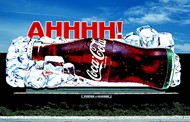
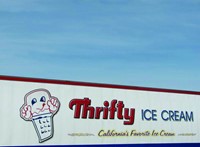
“When you create a brand, you’re telling a story."
Australia, Thomas adds, is a region that appreciates quality in regards to heritage whereas, as Ewer says, Asia- Pacific values localisation and a sense of the international, “Johnnie Walker is careful to celebrate the brand’s ties to China without diluting its impeccable Scotch credentials, whilst many brands release special edition products during festive periods like Chinese New Year.”
Brand equity also lives in design – of product or of packaging. Coca-Cola is owner of the most iconic bit of brand equity – its traditional glass bottle. Despite years of changing styles, Brand Union’s executive creative director Clare Styles says, “They’ve managed to hold onto the emotional attachments to that iconic piece of design.” Indeed even this year, Coca-Cola’s Ramadan campaign took the logo off cans, a confident act that relied on the prominence of its design alone.
Padilla says it’s easy to fall prey to changes in trends and respond with unnecessary changes to a brand. Style changes, as does language, and the brand language or visual identity should shift if it becomes irrelevant. But the brand’s core purpose should remain: the answer to the question ‘Who am I?’ he says, “You’re going to be polarising if you’re a good brand. I’m not going to change myself to make others happy, I’m going to change whatever’s not correlating within my messaging and get my point across. Not what people are going to like. Think about what you like and what you believe in and get your consistency straight and communicate it – that’s what branding is.”
Brands must respond to modern demands and remain flexibile, but understanding its personality and purpose is essential to a brand in order to determine exactly what it stood for yesterday and stands for today and tomorrow.


